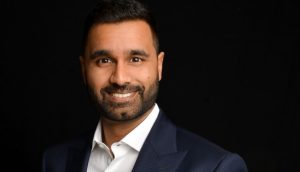The Institute of Communications & Advertising’s first ever leadership forum, called ‘Future Flash,’ brought speakers from across North America, the UK and leaders from top Canadian agencies together for one day at the CNIB Centre in Toronto on Thursday. The consensus? We need not worry, TV is not dead; there is a proper way to talk about ROI; and there’s talk, at the very least, about uniting against spec-work requests from the client side.
UK-based IPA director general Hamish Pringle presented the crowd with a 10-year forecast of the industry, based on a study commissioned from the Future Foundation. A variety of scenarios were explored in which new media market segments would experience growth – from display and classified advertising, to two-way and screen-based communication.
‘We see enormous growth in screen-based communication,’ said Pringle. ‘We’ve felt for some time that all of the stuff in the trade press, and indeed the national press, about the death of television has been completely ill-conceived and written by people who don’t really understand what’s going on. The fact is, television in its widest sense is only just beginning exponential growth in its share of the market. I think that’s very obvious because there are so many more screens around.’ From multiplatform extensions of screen-based ads to TiVo, Pringle says the average number of viewing hours is heading upward.
He also spoke about the need for agencies and clients to agree on a mutual enemy: waste. In the UK, for example, some agencies were upfront with clients about outside costs and the millions of pounds wasted annually in pitching new business. This helped create a numbers-based understanding of what is at stake in the current model of the ad industry.
One new remuneration tool worthy of consideration by ad agencies, said Pringle, is intellectual property rights and licensing fees. In what he called the ‘Hollywood Model,’ he outlined a case in the UK where a digital agency priced some work at ’12,’ but procurement wanted it done for ’10,’ so IPA was called in to help resolve the impasse. IPA ended up recommending that the agency do the work for ‘9’ but only for the English market, only for one year, and only on the web. Ultimately, the agency was to sacrifice fee income in order to retain IP rights. At the end of the year, when the UK web-campaign proved a great success, the client wanted to use it in German and French, on TV, web and in the press – which allowed the agency to renegotiate from a position of strength.
The remuneration and ROI question took centre stage with the next pair of speakers: Vulcans, Earthlings and Marketing ROI authors David Rutherford (who served ‘a seven-year sentence’ at P&G and is also known as an editor of the Cassies) and Jonathan Knowles (who has 10 years experience in finance and another 12 in marketing and branding). The co-authors stressed that ad agencies and client-side financial people are both saying the other doesn’t get it.
Ad and marketing pros use the ROI term far too loosely, they cautioned. Knowles, as the financial guy, was adamant that an ROI ratio is easily subjected to manipulation, and finance people know this. ‘ROI is not the be-all and end-all of finance metrics,’ he said.
Agencies must instead communicate the short- and long-term effects of what they do, said both authors. Marketing activity leads to sales and profit on the income statement in the short term. But what ad execs need to emphasize is that marketing activity increases or decreases brand equity, which is a long-term effect, and does show up on the balance sheet.
The duo quoted to a cogent definition by Tim Ambler: ‘Brand equity is a reservoir of cash flow, earned as a result of marketing effort, but not yet released to the income statement.’ The bottom line? Agencies need to talk the language of finance. Knowles said that means communicating in terms of profit, growth and risk as related to the brands being served.
Of course, what would a day-long conference be without a panel discussion?
The Big Shots Take the Stage
The day-long conference wrapped up with a sometimes heated roundtable discussion featuring top Canadian industry leaders Bill Durnan (Cossette), Dawna Henderson (Henderson Bas), Paul Lavoie (Taxi), Frank Palmer (DDB), Geoff Roche (Lowe Roche), Chris Staples (Rethink), Nancy Vonk (O&M), Noel O’Dea (Target), Jean-Francois Bouchard (Sid Lee) and Ted Boyd (58Ninety), with former Marketing Magazine editor Stan Sutter moderating.
Fear and the Old Order:
Naturally, the discussion began with general comments about the changes now hitting the industry at exponential speed: the new power and control in the hands of the consumer, and the social media explosion. ‘The biggest change is change itself,’ said Palmer. ‘Our industry is afraid of it. A lot of people running this industry worldwide are afraid… And it’s about time.’ Lavoie added that those who are afraid are ‘of the old order,’ and that the ad industry will remain a powerful one if it embraces change. ‘We’re in the business of persuasion, and we’re in the business of ideas,’ he explained, stressing that that’s a situation that has not changed in recent times.
On Getting Paid:
There was argument over whether bigger is better, or smaller is smarter – in terms of whether the ideal agency operates most creatively with 50 or 100 or 150 people. Panelists also discussed proving ROI and evolving remuneration models, with Lavoie pointing out that ‘some agencies are finding creative ways to get paid’ for value provided.
Staples suggested getting rid of timesheets altogether. ‘I just don’t know why we do it. We treat ourselves like accountants and lawyers. We’re not!’ Added Henderson: ‘I used to be a timesheet Nazi, and the result is your people start to think they work at a factory.’ The focus, said Henderson, should be on building ideas into success and then pricing for the overall value provided. ‘Some clients like it, and others are kicking and screaming that they’re getting ripped off.’
New Talent and Spelling Mistakes:
The topic soon turned to education and the new generation of talent coming into the agency world. Roche kicked off the complaints by saying schools like Humber College and Ontario College of Art and Design ‘need to be called to task’ when it comes to preparing new talent for the changing ad industry landscape.
Boyd chimed in by adding that many new grads and interviewees seem to lack basic reading and writing skills and have a questionable ability to sit through an hour-long briefing session and write it up without offending the client. Henderson added that it’s surprising how many young people are turning in resumes smudged by mistakes. ‘You just don’t see the work ethic or the leadership.’
To Spec or Not to Spec:
That was the boomerang question that heated up and kept dominating the panelists’ time at the microphones. The group was nearly unanimous about the need for everyone to stop doing work for free. Vonk approached the topic head-on: ‘We have got to stop this spec bullshit.’
Participants agreed that the ICA has been trying to pave the way for better understanding among clients about unfair expectations in the bidding process. Roche was the only panel member to point out that talk is good, but everyone was guilty. Lavoie insisted that it’s time to ‘start working together as an industry’ on the issue. Roche reiterated doubt about whether colleagues would adhere to any no-spec rules, ultimately stating that he didn’t trust anyone in the room not to jump at a prime piece of business, even if it required spec work at the bidding stage.
Staples countered that the industry should recognize ‘the power of saying no. It really fries the clients’ brains when you say no.’ Henderson added saying no to spec work would ultimately force clients to ‘treat you more as a professional.’ Roche concluded that many smaller agencies could not have reached current levels of success without doing work on spec (a point corroborated by Boyd), and questioned where the line, if any, should be drawn.
While most panelists appeared to support some sort of industry-wide ban on spec for the sake of professionalism, many admitted that there’s no ‘100% purity’ when it comes to turning away new business.


















